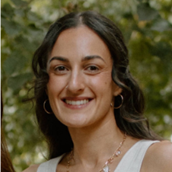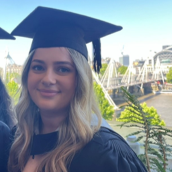In the final part of this three-part blog post series covering the full experience of the PhD Upgrade, Health and Life Sciences PGRs Hayley Redman, Keira Evans and Amy Chinner consider how to move on post-upgrade and reflect on the full upgrade experience.
Although we hope that this blog will have some helpful advice and tips for all PGR students coming up to upgrade, some of the upgrade processes within the Health and Life Sciences Faculty may vary from other faculties. We recommend checking upgrade requirements with your own faculty and department.
Meet the contributors:

Hayley Redman (she/her) – Hayley is an SWDTP-funded PhD student on the Health and Wellbeing pathway. Her research is a qualitative study which concerns fathers’ experiences of neonatal palliative care. She started in October 2024, and her upgrade was in July 2025.

Keira Evans (she/her) – Keira is a PhD student within Public Health and Sports Science, funded through the Stepping Out project. Stepping Out aims to determine predictors of falls in older adults. Keira’s research focuses on applying a predictive processing framework and neuropsychology to understanding these predictors. She completed her upgrade in September 2025.

Amy Chinner (she/her) – Amy is a NIHR School for Primary Care Research funded PhD student based within the Exeter Collaboration for Academic Primary Care (APEx) group. Her research focuses on understanding the communication of uncertainty as a component of shared decision making in primary care. She completed her upgrade in September 2025.
Moving forwards and reflections
What are you focusing on now that your upgrade is done?
Hayley: Make sure to take some time off after your upgrade and to plan a relaxing activity to do afterwards! I went out for dinner that evening and then took the next day off (which fortunately for me was a Friday meaning I had a long weekend!). Following the upgrade, I was able to dedicate more time to my ethics application.
Keira: I am now focusing on all the analyses I said I was planning in the upgrade! My project has not changed since the upgrade. The only way that it has changed how I think is by encouraging to me take a step back and look at the bigger picture. When planning individual studies it is easy to only be focussed on that one research question, one methodology, and one outcome. However, the upgrade showed me that it is just as important to look at all of your studies collectively to see how they all fit together to get the most of out your PhD.
Amy: I booked a recovery day off after the upgrade presentation and viva day (would recommend), but otherwise it was back to getting on with my scoping review and qualitative study work. I’ll also work with my supervisors to reflect on the discussions and how to develop my plans.
Did anything surprise you about the upgrade process?
Hayley: How supportive the environment is – the panel aren’t trying to catch you out or ask trick questions! They are looking to understand your project and it’s potential. My SWDTP peer mentor helped me to reframe how I saw the upgrade process. He suggested instead of viewing it as an exam or interview to see it as a peer review process and an opportunity to talk to two interested senior academics about your research.
What advice would you give to someone preparing for their upgrade?
Amy: Stop editing the presentation at least a few days beforehand! Practice what you have and focus more on thinking about your reasoning for what you’ve done/what you want to do – sometimes there’s no perfect “right” answer, but having a clear rationale counts for a lot. Also, include hyperlinks to any published work in your report to save space! Oh, and prepare for technology problems with the presentation – do a test run early!
Hayley: 1.) Attend an upgrade presentation – they are often advertised on departmental mailing lists or SharePoint sites. This can be a good way to get a feel for what the presentation component will be like, and it is a good way to get to know about other PGR student’s work! If this isn’t possible, ask students who have been through the process recently if they would be happy to have a quick chat about the process with you. 2.) Know your presentation inside out! It is always more engaging to watch someone present when they aren’t reading directly from their notes. I did a practice run through with my supervisors and another with a PhD student who had already been through the upgrade process. You can also use the ‘rehearse timing’ tool on PowerPoint to practice on your own.
Are there any resources (books, templates, blogs etc.) you found useful?
Amy: I followed the faculty guidance to structure my report (and had a look at the example reports on the HLS upgrade SharePoint). For presenting, I was recommended the “TED Talks: The Official TED Guide to Public Speaking” by a fellow PGR.
Hayley: The faculty arranged an upgrade event where they talked through the process and answered questions – this was really helpful to attend. And talking to peers!

Images by Manfred Steger from Pixabay
The authors acknowledge the use of GenAI (ChatGPT) in the generation of some questions to inform the structure of this blog.

